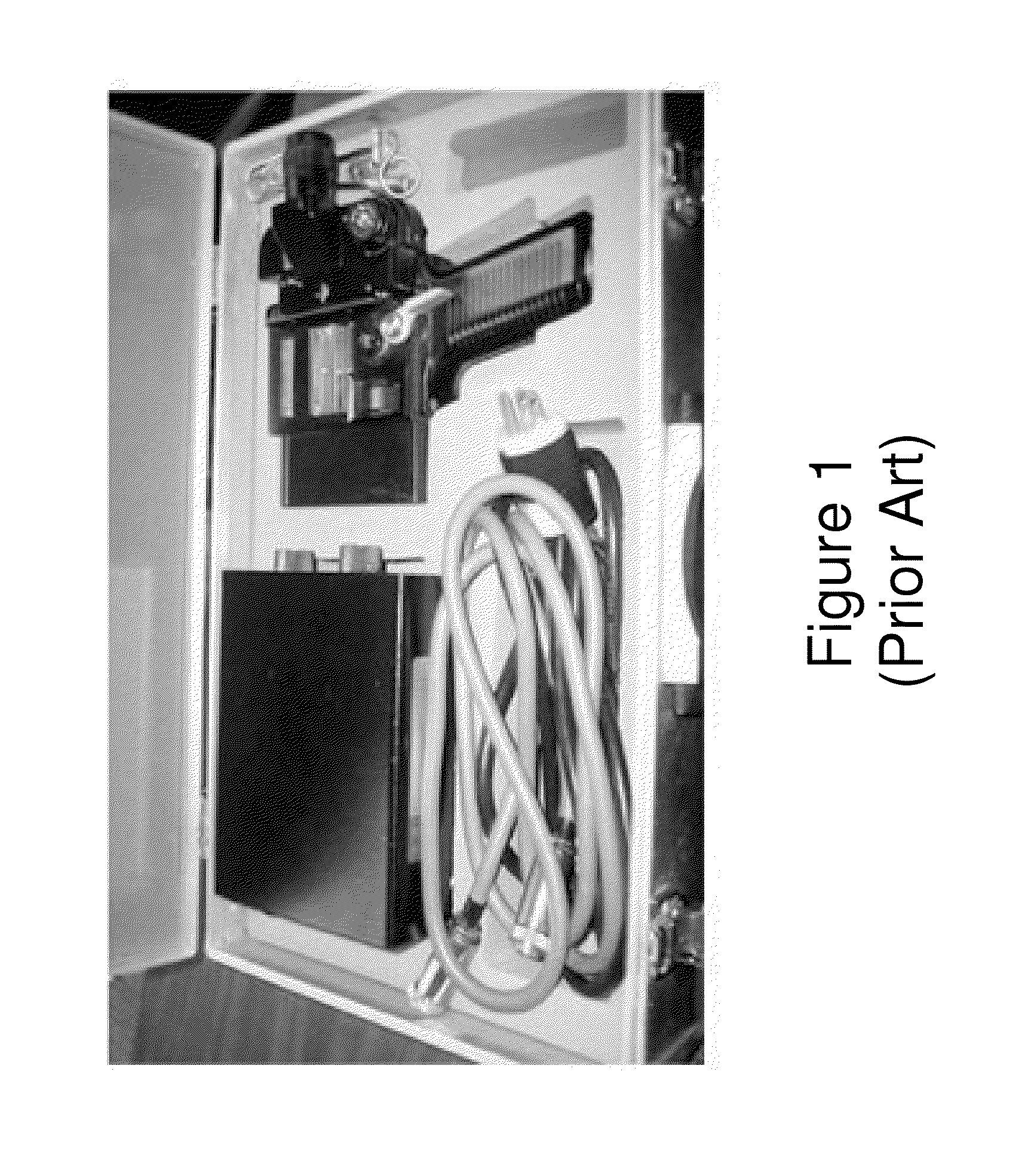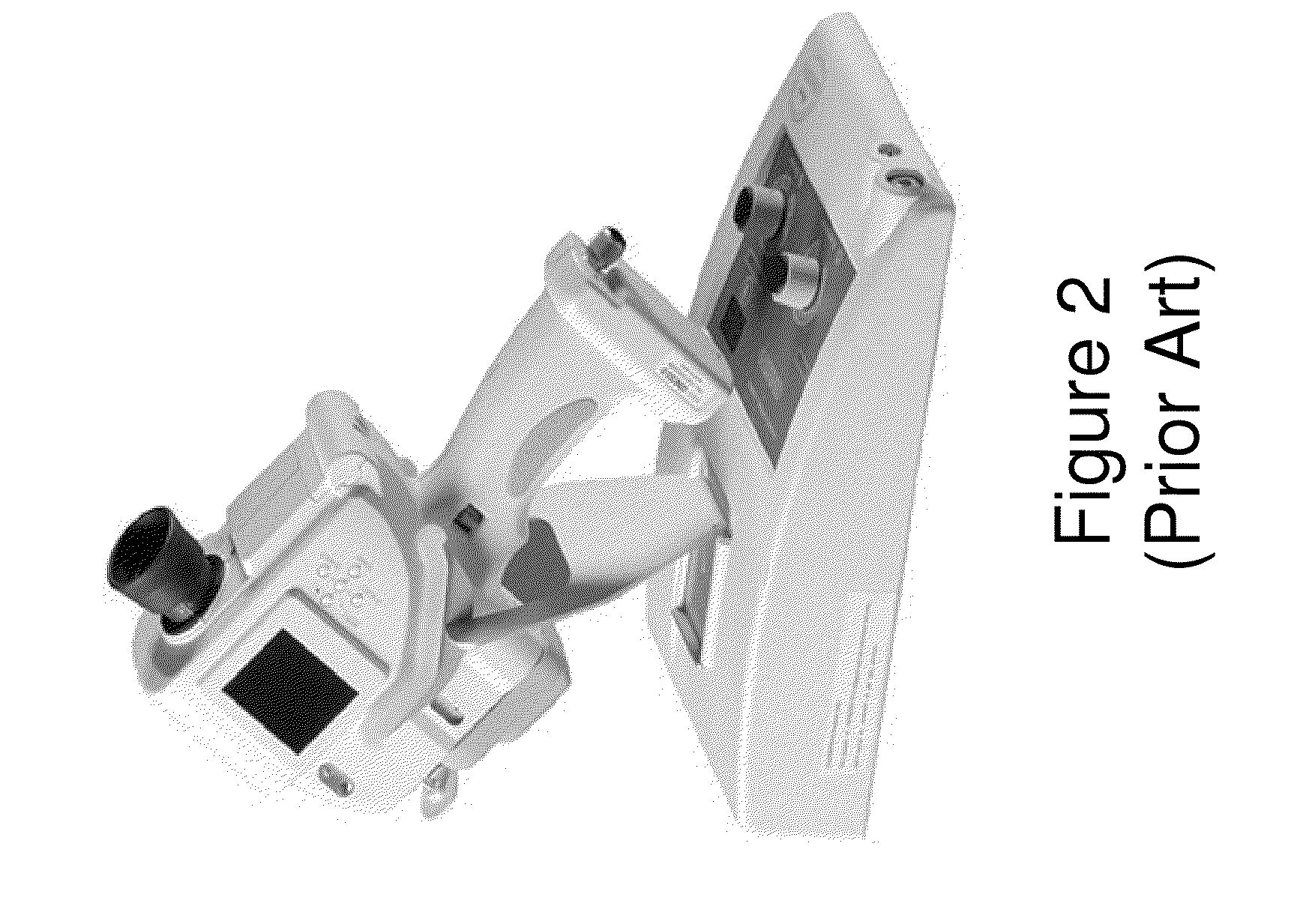Handheld portable fundus imaging system and method
a portable, portable technology, applied in optics, medical science, instruments, etc., can solve the problems of increasing health problems, insufficient image quality, and inability to meet current requirements, and achieve the effect of reducing the number of portable systems, and increasing the number of health problems
- Summary
- Abstract
- Description
- Claims
- Application Information
AI Technical Summary
Benefits of technology
Problems solved by technology
Method used
Image
Examples
first embodiment
[0058]Optical elements of a fundus imaging system 200 according to the present invention are shown schematically in FIG. 10. This system 200 comprises an aspheric ophthalmic lens 202 for focusing light from an LED illuminator 210 into the eye 10 through the pupil 18 and lens 12 of the eye 10, to illuminate the fundus 16. The double aspheric lens 202 collects light reflected from the fundus 16, focusing it at the intermediate focus plane 204 of the aspheric lens 202, and light is directed through an achromatic lens 230 into the objective lens 244 of a camera imaging system 240, to image the fundus in the plane of the image sensor 242 of the camera. The LED illuminator 210 is placed at a position 212 along the optical axis of the system so as to produce, through the aspheric lens 202, a sharply focused image of the illumination source at the pupillary plane 218. An opaque occluder 250 is provided so as to occlude or block illumination to part of the field of view and selectively illum...
second embodiment
[0063]In a practical implementation, an optical system 300 for imaging of interior parts of an eye 10, according to the present invention, is illustrated schematically in FIG. 12. The system 300 comprises an assembly of a fundus imaging system adapter 301 and a conventional digital camera 340 having an off the shelf camera objective lens 344. The adapter 301 is enclosed in a housing 370 (not shown in FIG. 12) and is coupled to the camera objective via an achromatic lens 330. The other optical elements of the fundus imaging camera adapter comprise an aspherical ophthalmic lens 302, an LED illuminator 310, and a polarizer 360. A semicircular occluder 350 is mounted on a motorized mount 352, including a small motor 354 and drive system 356 to allow the semicircular occluder 350 to be rotated around the optical axis of the system. Referring to FIGS. 13 and 16, which show the arrangement of the LED illumination system 310, four individual light emitting diodes (LED) LED1, LED2, LED3 and ...
PUM
 Login to View More
Login to View More Abstract
Description
Claims
Application Information
 Login to View More
Login to View More - R&D
- Intellectual Property
- Life Sciences
- Materials
- Tech Scout
- Unparalleled Data Quality
- Higher Quality Content
- 60% Fewer Hallucinations
Browse by: Latest US Patents, China's latest patents, Technical Efficacy Thesaurus, Application Domain, Technology Topic, Popular Technical Reports.
© 2025 PatSnap. All rights reserved.Legal|Privacy policy|Modern Slavery Act Transparency Statement|Sitemap|About US| Contact US: help@patsnap.com



